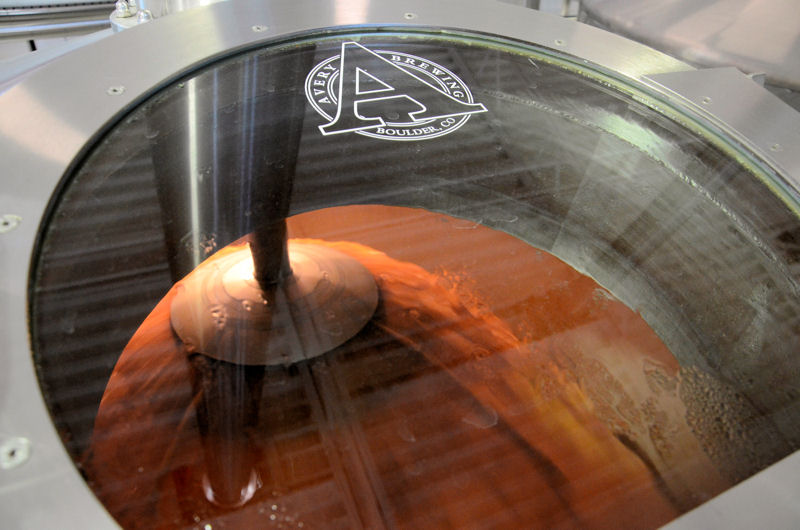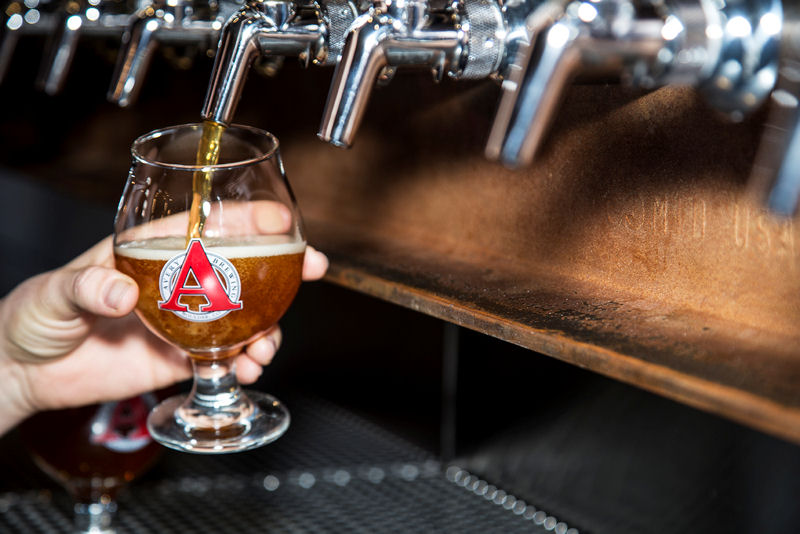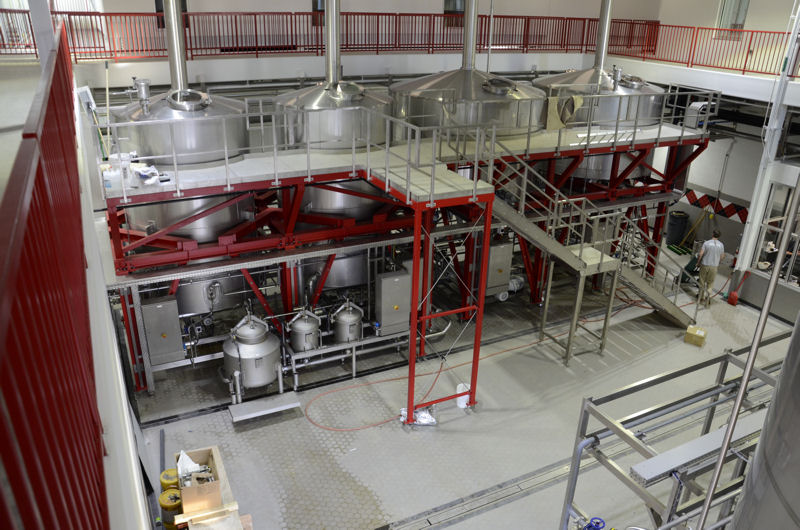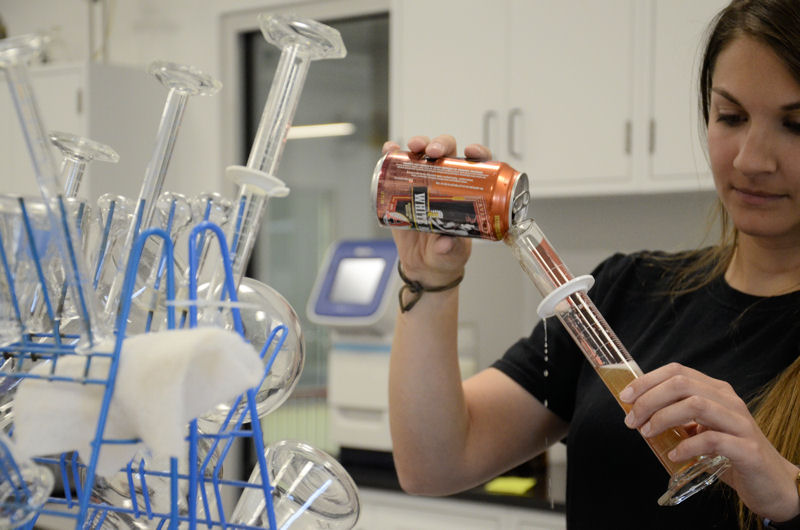
The City of Boulder, Colo.’s water resource recovery facility estimates that it will need the equivalent of about 7949 L (2100 gal) of weak wort per day, which Avery’s new brewery will be able to supply. Photo courtesy of Avery Brewing Co. (Boulder).
When the City of Boulder, Colo., decided to find ways to further reduce nitrogen runoff from its water resource recovery facility (WRRF), it discovered that the answer lay in one of the least likely substances: beer. Or, more specifically, the answer lay in weak wort — a sugary, liquid byproduct of the brewing process.
Being proactive
“For years, staff at the city’s wastewater treatment facility has been evaluating ways to reduce nitrate–nitrogen levels in the wastewater without using additional chemicals,” said Cole Sigmon, wastewater process-optimization specialist at the City of Boulder.

Avery Brewing’s new tap room and restaurant has 60 taps with 30 different beers on draft. Photo courtesy of The Brewtography Project.
Sigmon said the city has monitored and reduced its nitrate–nitrogen levels since 2007. The city took a proactive step to remove approximately 50% of nitrogen from Boulder’s wastewater discharges before any mandated nutrient-control requirements, such as State Regulation 85, took effect. Nitrogen removal helps provide additional protection for aquatic wildlife and downstream water users. These proactive measures also have helped keep the city from violating any permit requirements for 2.5 years, Sigmon said.
The city now wants to use weak wort to help remove even more nutrients.
Exploring options
As part of its research into ways to further reduce nitrate–nitrogen levels, city staff “explored local waste sources that might provide biodegradable carbon, such as tofu, whey, and pharmaceutical cell media,” Sigmon said.

Avery Brewing has opened a new highly efficient, state-of-the-art brewhouse. Photo courtesy of Avery Brewing Co.
In 2012, city staff tested samples of Avery Brewing Co.’s (Boulder, Colo.) weak wort, Sigmon said. Based on laboratory-scale experiments, the city determined this byproduct includes the high levels of biodegradable carbon needed to help feed the microorganisms that break down and reduce nitrogen compounds in wastewater, he explained.
In early 2014, city staff worked with Avery brewers to transport more than 45,000 L (12,000 gal) of the weak wort to the WRRF for larger-scale testing. The testing was funded by a $1 million Colorado Department of Public Health and Environment grant to improve nitrogen reduction. The larger-scale tests successfully removed additional nitrate–nitrogen from the wastewater.

Avery Brewing’s lab tests beers 20 times from grain to glass. Microbiologists and chemists use lab equipment to determine the cell count, cell size, viability, and vitality of the brewer’s yeast and measure the color, bitterness, and diacetyl of beer to maintain high quality and consistency. Photo courtesy of Avery Brewing Co.
Using weak wort to remove nitrate–nitrogen from the community’s wastewater is the most sustainable and cost-effective solution that city staff has identified, Sigmon said. “Using the weak wort twice a week, with daily savings of $500, would result in an estimated annual savings of $52,000,” he said.
Since late 2014, city staff and Avery Brewing representatives have participated in a series of informal, verbal discussions about possible future collaboration. They’ve discussed the potential for contract liquid haulers to transport liquid weak wort in 22,700 L (6000 gal) loads from Avery’s new brewery in Gunbarrel, Colo., to the Boulder WRRF, located less than 4.8 km (3 mi) away. City staff then could use the brewing byproducts to treat wastewater, instead of buying and using additional chemicals.
— LaShell Stratton–Childers, WEF Highlights








June 12, 2015
Featured